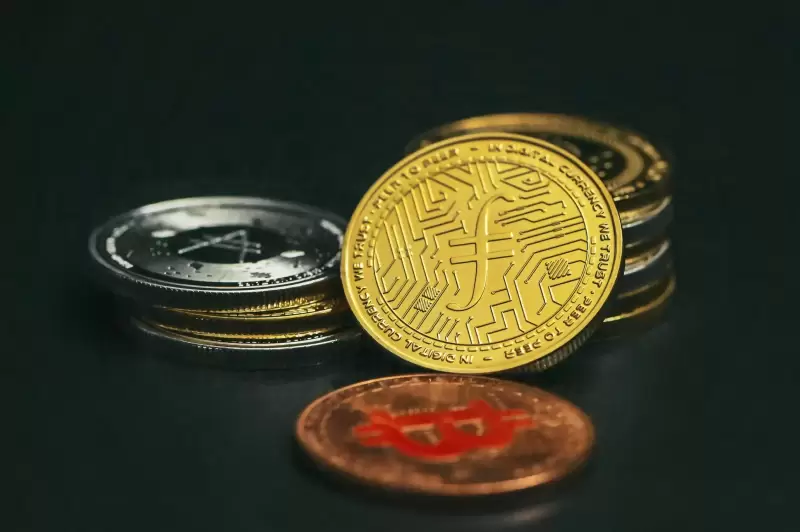 |
|
 |
|
 |
|
 |
|
 |
|
 |
|
 |
|
 |
|
 |
|
 |
|
 |
|
 |
|
 |
|
 |
|
 |
|
Cryptocurrency News Articles
Pi Network: A Deep Dive into Its Claims, Controversies, and Potential
Oct 04, 2024 at 01:34 am
Pi Network claims to have over 60 million users, but recent data raises questions. Reports from blockchain explorers like ExplorePi and Pi Door show only 6.2 million wallets.

Despite Pi Network's claims of over 60 million users, recent data from blockchain explorers like ExplorePi and Pi Door shows only 6.2 million wallets. This discrepancy has raised questions about the network's reported user count.
However, it's important to note that Pi Network is still in its migration phase. Many users are awaiting the completion of their KYC process, which is necessary to move from the Testnet to the Mainnet.
The KYC process ensures that real users, not bots, participate in Pi Network's ecosystem. Without completing KYC, users cannot fully engage in the network. Currently, only 12 million users have completed KYC, which explains the lower wallet count. It's possible that many users are still in transition, waiting for verification to join the Mainnet.
Pi Network's social media presence also reflects an active community. With 3.3 million followers on X and 1.5 million on YouTube, Pi's engagement with users remains strong. This may support the network's claims, though further Mainnet activity will provide clearer data.
Another issue raised by critics is inflation. By September 2024, the circulating supply of Pi more than doubled, sparking concerns about its long-term value. Critics believe this rapid increase in Pi supply will devalue Pi coins.
However, many Pi coins remain locked, which could help stabilize inflation. In August 2023, about 1.29 billion Pi coins were locked by users. This action reduces the available Pi supply, balancing the effects of inflation.
Though inflation is higher now compared to more established cryptocurrencies like Bitcoin (with a yearly inflation rate of 0.8%), Pi is still in its early stages. As Pi Network grows and the Mainnet launch progresses, the inflation rate may stabilize.
Comparing Pi to mature cryptocurrencies like Bitcoin or Ethereum may not give a complete picture. Pi Network is still developing, and inflation is part of that process. The real impact of the increased supply will become clearer as the ecosystem expands.
Some criticize Pi mining, arguing it's simply screen tapping. However, Pi's mining system is based on Stellar's Federated Byzantine Agreement (FBA). This model allows users to participate in the network without high-cost equipment, unlike traditional mining systems like Bitcoin's Proof of Work (PoW).
In Pi Network, users earn Pi coins by interacting with the app daily. Pi mining focuses on accessibility, making cryptocurrency participation easy for anyone with a smartphone. While it doesn't follow traditional mining methods, the goal of Pi Network is to build a decentralized network over time. As more users join and validate transactions, the network's functionality will grow.
The real validation in Pi's system comes from Pi Nodes. These users run node software and help validate transactions. Other users, called Pioneers, interact daily, creating a broader network of participants.
The KYC Process and Pi Network Data Collection
The KYC process in Pi Network involves submitting personal information, like ID documents and selfie videos. Critics argue that this data collection may be excessive. However, KYC is a standard part of many cryptocurrency platforms. It ensures compliance with regulations and helps prevent fraud.
Many major cryptocurrency exchanges, including Binance and Coinbase, also use KYC processes. Pi Network's approach aims to create a verified user base, preventing bots and fake accounts from joining the network. This is necessary for a secure and trustworthy blockchain environment.
Pi Network's Development Timeline: Slow but Steady
Pi Network has faced criticism for its slow progress. After five years, the Mainnet launch is still incomplete. However, Pi Network is not the only project to take years to develop. For instance, Cosmos took five years to build its Inter-Blockchain Communication Protocol.
Pi Network's slower timeline might be due to its unique approach. Unlike other projects like Dogecoin, which launched quickly, Pi's team is focused on creating a secure and scalable platform. Pi is a Stellar fork, and the development process requires adjustments for scalability and mass adoption.
While the slow rollout has frustrated some users, it allows for careful testing and user migration. The gradual transition to the Mainnet ensures that the network is secure and reliable when fully operational.
Rather than focusing on Pi's shortcomings, it is essential to recognize the unique value it brings to the table: accessibility, phased development, and a gradual shift towards decentralization. Dismissing Pi as “worthless” ignores the broader possibilities it could unlock in the future, making it a project worth keeping an eye on.
Disclaimer:info@kdj.com
The information provided is not trading advice. kdj.com does not assume any responsibility for any investments made based on the information provided in this article. Cryptocurrencies are highly volatile and it is highly recommended that you invest with caution after thorough research!
If you believe that the content used on this website infringes your copyright, please contact us immediately (info@kdj.com) and we will delete it promptly.
-

-

- Two Ondo Finance wallets transferred 13.83 million tokens worth $12.2 million into Coinbase Prime about four hours ago.
- Apr 11, 2025 at 06:40 am
- Ondo Finance continues to build on a wider industry trend in their ecosystem through their recent token deposit at Coinbase Prime which provides insights about their token accumulation and flow management strategies.
-

-

-

-

-
![The downtrend of Hyperliquid [HYPE] has not halted The downtrend of Hyperliquid [HYPE] has not halted](/assets/pc/images/moren/280_160.png)
-

-


















![🐢Super Mario World Koopa Troopa 100% 96⭐️ + Coin [Ao Vivo] 🐢Super Mario World Koopa Troopa 100% 96⭐️ + Coin [Ao Vivo]](/uploads/2025/04/10/cryptocurrencies-news/videos/super-mario-koopa-troopa-coin-ao-vivo/image-1.webp)








































![The downtrend of Hyperliquid [HYPE] has not halted The downtrend of Hyperliquid [HYPE] has not halted](/uploads/2025/04/11/cryptocurrencies-news/articles/downtrend-hyperliquid-hype-halted/middle_800_480.webp)

